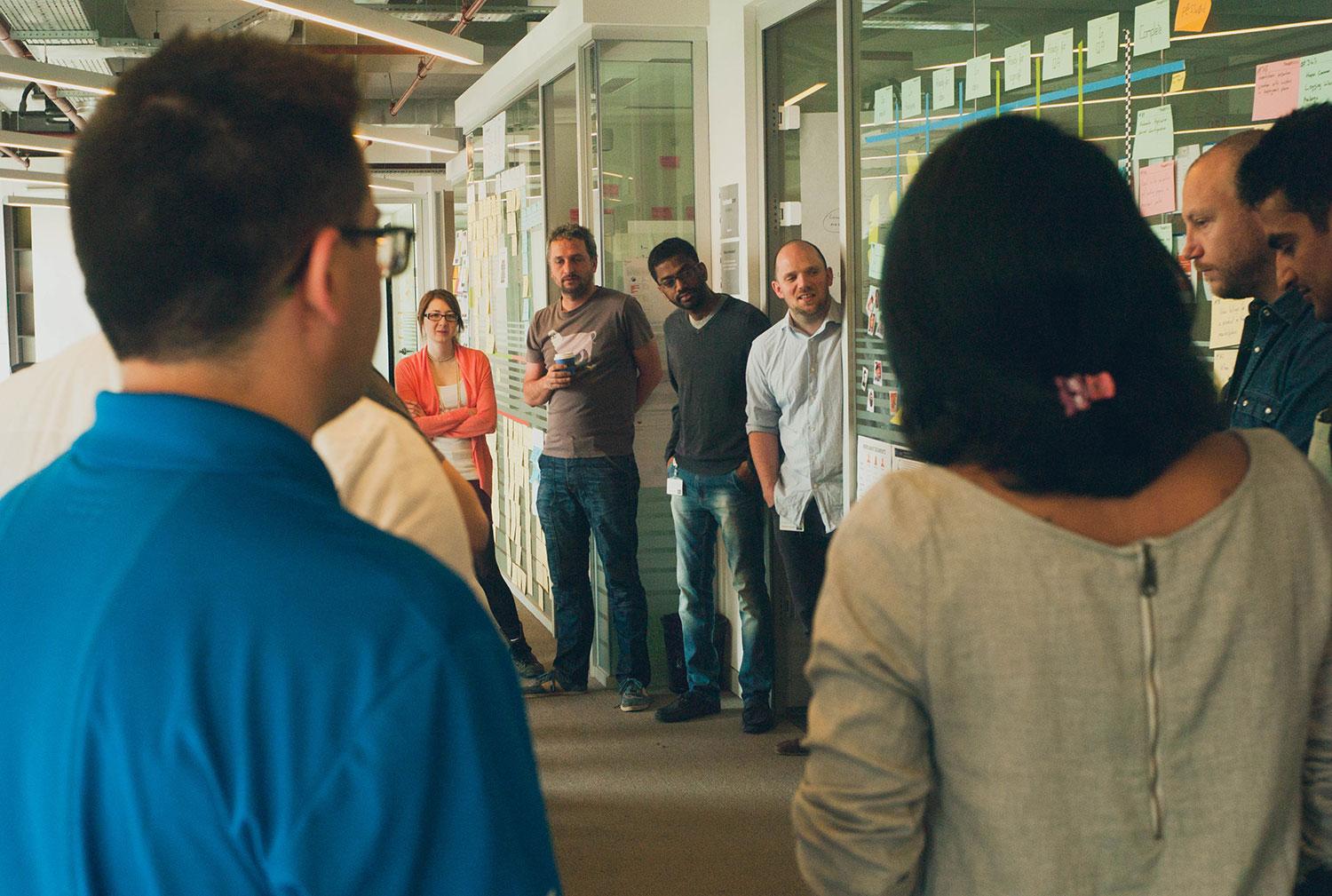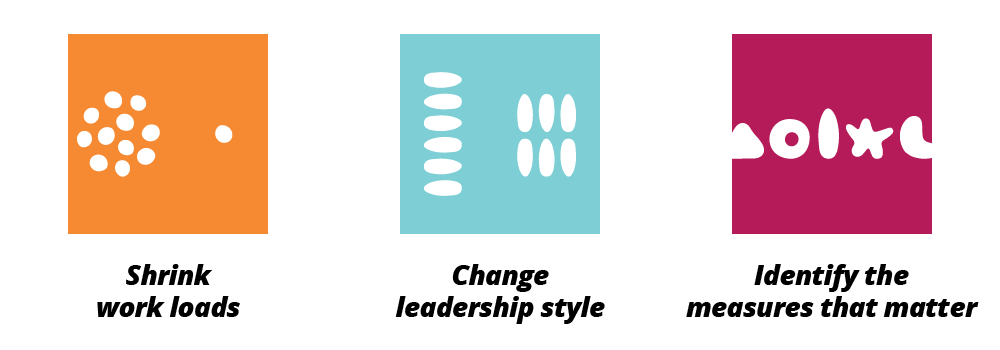
Scaling Agility: A To-Do List
In the face of industry disruption, incumbent organisations are starting to pay close attention to the techniques used by the disruptors in order to rapidly evolve and respond to change. What began as an agile movement outside of IT has now become way more focused on business agility and a new business model is emerging.
While each organisation will have unique traits and so the emphasis on certain aspects will be greater, there appears to be some common elements that organisations will need to face in order to respond. The following is a snapshot of these elements. I hope you see it as evolutionary not revolutionary.
To Do List
It still starts with understanding purpose as defined by the customer and how the work we do contributes to that.
Focusing on Purpose is how we identify value, what it is and how to measure it. A great metaphor for this in the banking industry is to think in terms of delivering homes not mortgages. It also helps to align the organization to a common cause by:
- Understanding how value flows through the company, and how to improve it
- Validating we are meeting customer need
- Informing supporting functions like Finance and HR
- Avoiding association with hopes and fears by helping people align their work to the company story
Define Outcomes to Progress you Toward Purpose
These are the things we believe we need to achieve to progress toward purpose. To know this we need to understand demand, what is being asked of us, how capable are we of doing it and how do we know when we have delivered on that? With this understanding we now know what to measure and can streamline the organisations to improve these measures rather optimising on milestones, scope, capacity, money or time.

Identify the Best People to Deliver the Outcomes
Thinking more broadly in terms of who has knowledge to contribute, who is impacted and who has the skills creates a far richer input and ideation. Getting this right will help to align people to the work, creating stable teams and stable teams lead to high performing teams as it:
- Builds autonomy and empathy with purpose
- Reduces context switching
- No stand up and stand down implications
- Limits handoffs and dependencies of teams
- Creates higher engagement, allowing members to get to know each other well, truly gel, adjust personalities and communication styles
- Provides business predictability
- Have them create ideas to achieve the outcome
- Implementing a culture of "test and learn" is a critical skill set for business success. This requires companies to consciously invest in capabilities to innovate and explore new ideas against the outcome and to be able to quickly identify which ideas are likely to succeed. Success is measured by the probability of an idea contributing to moving the needle toward the outcome.
- Ideas can then be represented as Hypothesis, if we do A we think B will happen and we will know when we see C
- Work on the highest probability ideas
- Priority is now easy to define, it's those things with the highest probability, and this becomes the backlog of initiatives to take on. Its important here to embrace the principle of moving forward with uncertainty as accuracy improves with time and its more important to know if will we achieve the outcome, will it have the impact, is it still feasible rather than will it be completed. Dealing with uncertainty is a cultural trait of agility.
- Create the smallest thing to prove it
- This allows us to validate and get early and frequent feedback. We minimise investment in people, time and money until we have knowledge and have a greater ability to know when enough is enough. Smallest thing aligns with the concepts of Minimum Viable Product, etc... and is about first providing the skateboard when building a car rather than a wheel. That is, is it valuable and gives us knowledge with which to adapt.
- Two ‘gotchas’ on this topic. Make sure you build an architecture to support working in smaller chunks, it must be capable of constant change and evolution. Secondly don’t be too prescriptive on how you want teams to way work, there are a LOT of frameworks and methods out there so let teams work out what works best for them. Focus instead on the measures, if teams are achieve great results in those measures who cares how they get there.
- Now Scale it!
- Has a good ring to it this one, simply scale the things that work based on knowledge and adaptation and STOP the things that don't, it's not quite that simple but you get the gist. However, it is important to continue to recognise different work types and apply resource and method accordingly. The uncertain exploration type work is short, high failure, high learning and requires different teams and methods that the more certain sustaining work we do with knowledge. We must balance our portfolio of work across the different types in something like a traditional horizons model to ensure we are always looking ahead and are able to disrupt ourselves before someone else does.
- Lastly Visualise everything
- How can we make everything transparent and visual so decisions can be made quickly? Getting visualisation right lets us capture weaker signals and leading indicators so we can respond to disruption and change. It also creates a visual reference of how work aligns to purpose and acts as a communication mechanism across the company.
Where to Start

Shrink work loads
Build flexibility in by having smaller chunks of work so you can stop or change more easily and make it safer to fail. If we are wrong, let's not be wrong for long and at minimal cost.
Change leadership style
Understanding the new role of a leader can be a difficult transition to make but also rewarding. Some conscious effort must go into helping leaders understand the value they add but also how to avoid getting in the way or constraining the flow of value.
Identify the measures that matter
- Have we built in ways to find out if what we delivered matters?
- Are we finishing more often, with higher value?
- What are we learning, have we stopped anything as a result?
- Have we improved our capability to respond to change?
- Treat money and capacity as constraints not planning mechanisms or measures.
- Build up the trust of the financial and governance teams to remove the focus of annual ‘on budget’ metrics and instead work with teams to maximise the value we produce for the money we spend.
It remains true, however, that change is constant and scaling is a moving beast as learning occurs and teams begin to self organise and identify new ways to optimise the flow of value to end customers. There is no one single answer to agility at scale; principles are far more important that process. Giving teams the minimum set of constraints within which to operate, decide, innovate and improve is the key to sustainable change.
Disclaimer: The statements and opinions expressed in this article are those of the author(s) and do not necessarily reflect the positions of Thoughtworks.














